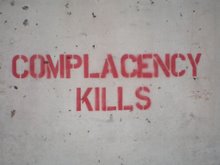As predicted, there is a mad rush by citizens of the country to by gas after the president asked people to conserve.
It will take a few days for people to calm down and common sense to come back. The best idea is to conserve gasoline. Do it.
The US Government Reports on the Effect of Katrina on the Gasoline Situation.
According to the Minerals Management Service (MMS), as of 11:30 Central Time September 1, Gulf of Mexico oil production was reduced by over 1.356 million barrels per day as a result of Hurricane Katrina, equivalent to 90.43 percent of daily Gulf of Mexico oil production (which is 1.5 million barrels per day). The MMS also reported that 7.866 billion cubic feet per day of natural gas production was shut in, equivalent to 78.66 percent of daily Gulf of Mexico natural gas production (which is 10 billion cubic feet per day).
There have been many reports in the media of gas stations in various parts of the country that are out of gas. While EIA does not monitor supplies at individual stations or localities, there are some reasons why this may be occurring at selective stations. With about 2 million barrels per day of refining capacity shut in or reduced due to Hurricane Katrina, approximately 1 million barrels per day (42 million gallons per day) of gasoline is not being produced. This represents about 10 percent of the nation's consumption, and is a major drop in the normal flow of gasoline through the system. In addition, major pipelines originating in the Gulf of Mexico area (namely the Plantation and Colonial product pipelines and the Capline crude oil pipeline) have been severely impacted or are closed. As a result, the distribution of gasoline, particularly in the Gulf Coast, Midwest, and East Coast regions of the country, has been significantly affected. Localities that were being served from gasoline terminals which already had low inventory levels, perhaps because they were expecting a delivery in the near future, could run out of supply before the next delivery arrives. Other areas which did have plenty of inventories on hand prior to the loss of the refineries and pipelines will be able to withstand the loss of supply for a longer time. However, it is impossible for EIA to know which terminals were well supplied and which ones were not prior to Hurricane Katrina, since EIA does not collect inventory data for individual terminals. But as soon as these stations are able to receive additional gasoline, they should be able to re-open.
No idea when that will happen. Some estimates within a few weeks with delivery to gas stations taking several more days in some locations. Best guess would be low gasoline available in some areas for up to three weeks. Additionally:
Impact on Refineries. Unlike 2004's Hurricane Ivan, which affected oil production facilities and had a lasting impact on crude oil production in the Gulf of Mexico, it appears that Hurricane Katrina may have a more lasting impact on refinery production and the distribution system. However, that news is varied, with some refineries likely able to restart their operations within the next 1-to-2 weeks, while others will likely be down for a more extended period, possibly several months in length. There are several factors currently inhibiting refinery production (see EIA's This Week in Petroleum).
The U.S. distillate surplus that built up over the last several months will certainly be important as seasonal emphasis shifts to heating oil. While distillate prices will react to crude price and related developments, the more critical near-term product problem relates to gasoline.
And it's not just gasoline. Break out the barbecues and eat sandwiches for lunch:
There are reports that Hurricane Katrina may have damaged four natural gas processing facilities on the Gulf Coast with a combined capacity of 5.5 Bcf per day, which is the equivalent of almost 10 percent of total national production. Follow-up reports have not indicated expected outages longer than a few weeks, with many units expected on line within a few days. A full assessment of some facilities, however, will require onsite inspections. If these or other plants are inoperable for any length of time, the loss could delay a recovery of natural gas production in the area. Even if platforms and pipelines are either unaffected or readily restored to service, the gas often can't flow to market without treatment. In 2003 (the latest year with complete data), almost three-fourths of total U.S. marketed gas production was processed prior to delivery to market.
This will not effect everyone, but, in the interest of helping the entire nation be able to survive in the next few weeks without ricocheting outages of gasoline or natural gas, we should take ever opportunity to conserve.
Check here for ways to conserve gasoline. Additional update to come on ways to conserve natural gas.
Also see my full report on the state of oil and gasoline resources in the United States at:





















1 comment:
For the first time since 1979, I have seen with mine own eyes, a gas line of about seven automobiles waiting to fuel-up at a gas station. For the first time, I saw Premium at 3.99&9/10 Bucks/Gal.
Strange times we are living in.
Post a Comment